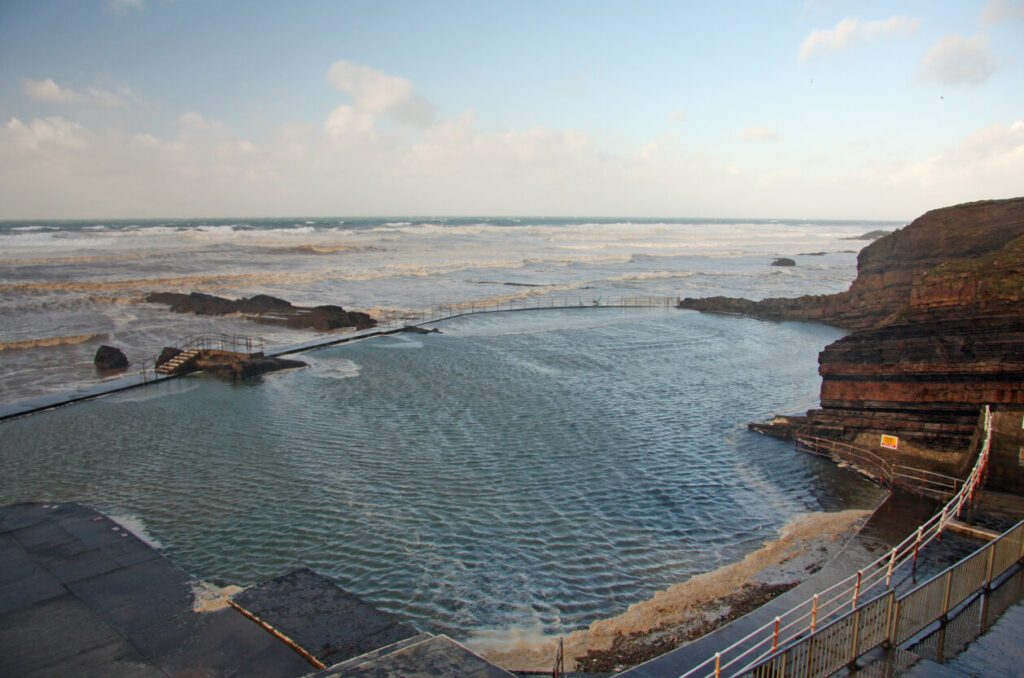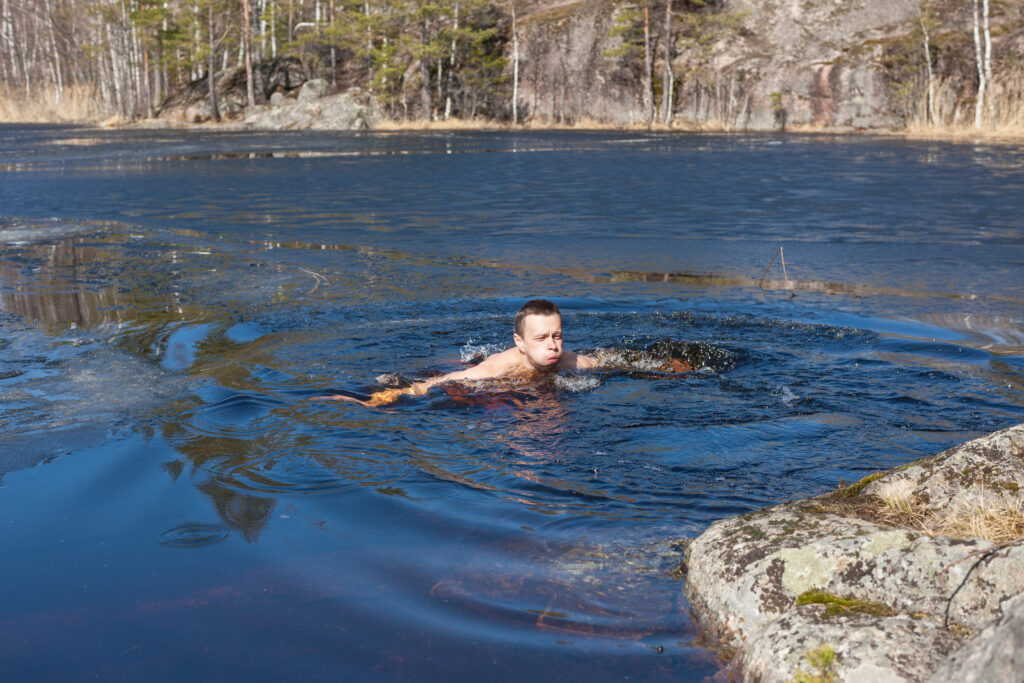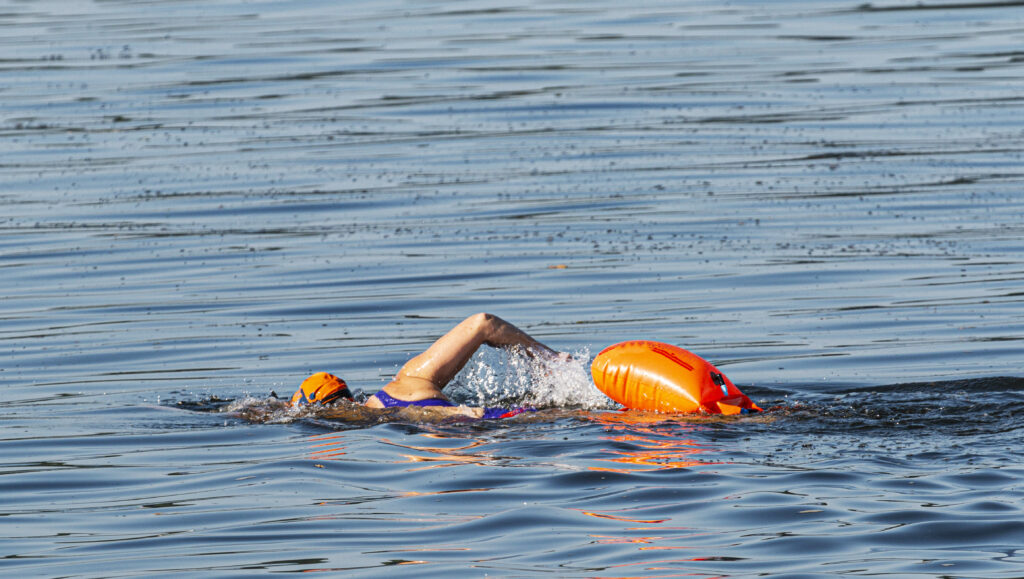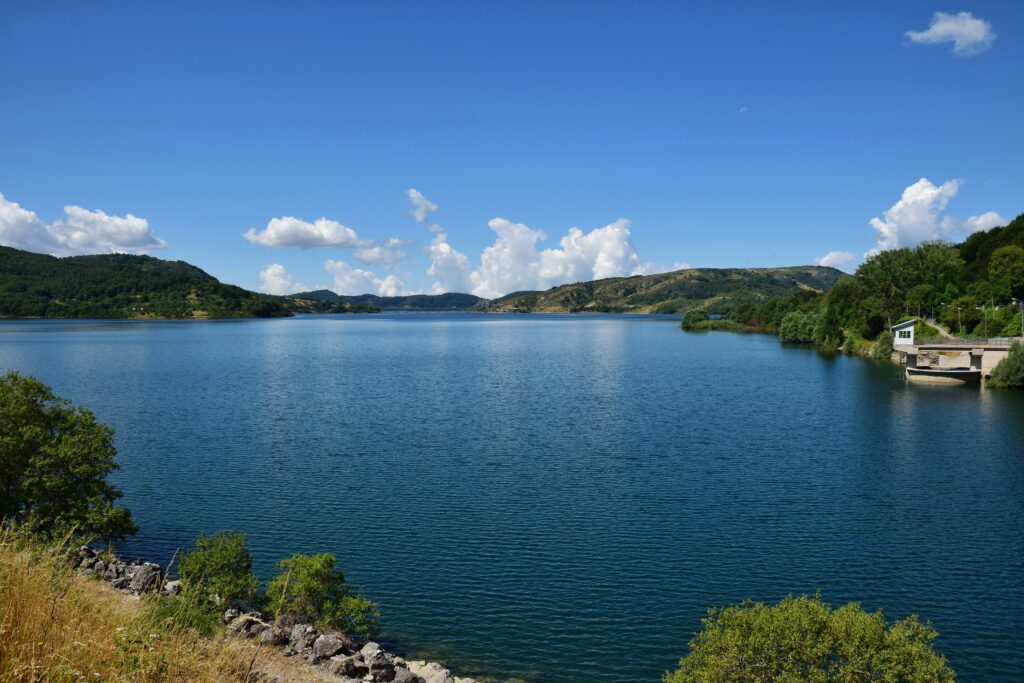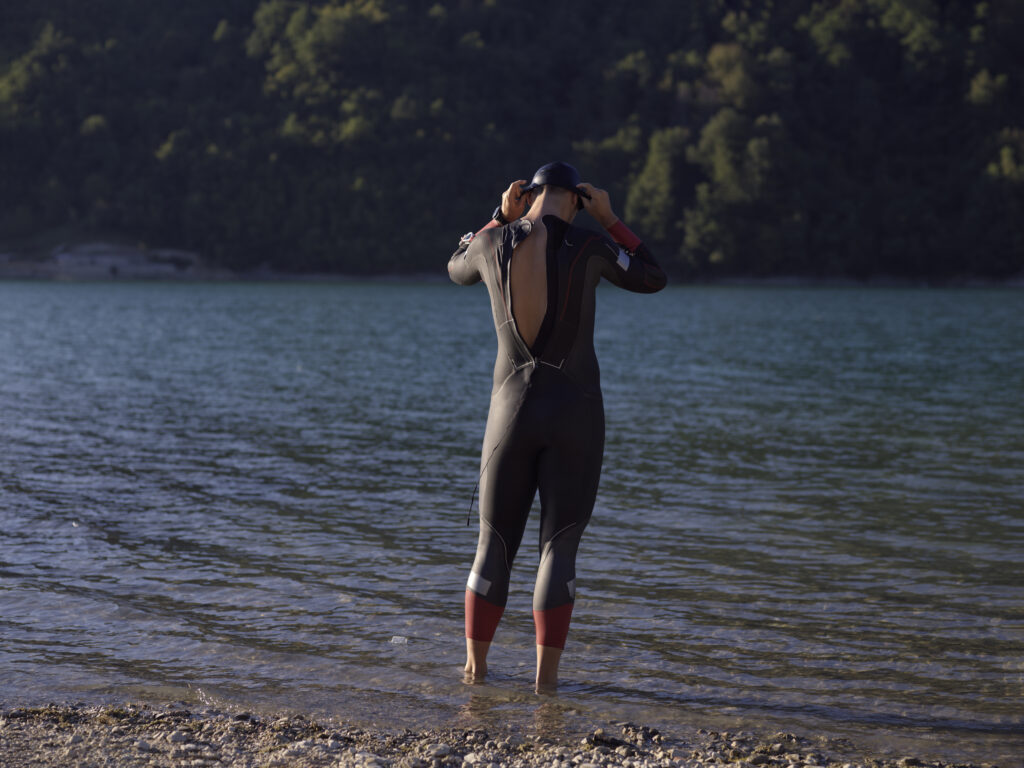Are you longing to discover the hidden swimming spots across Britain? We’ve been exploring the details of Wild Swimming Britain, a comprehensive guide that reveals 1000 secluded dips throughout the country’s rivers, lakes and waterfalls.
This third edition travel guide offers adventurous swimmers a wealth of information about natural swimming locations across England and Wales. It’s designed to help nature lovers find those perfect, off-the-beaten-path spots where they can enjoy the refreshing embrace of Britain’s natural waters.
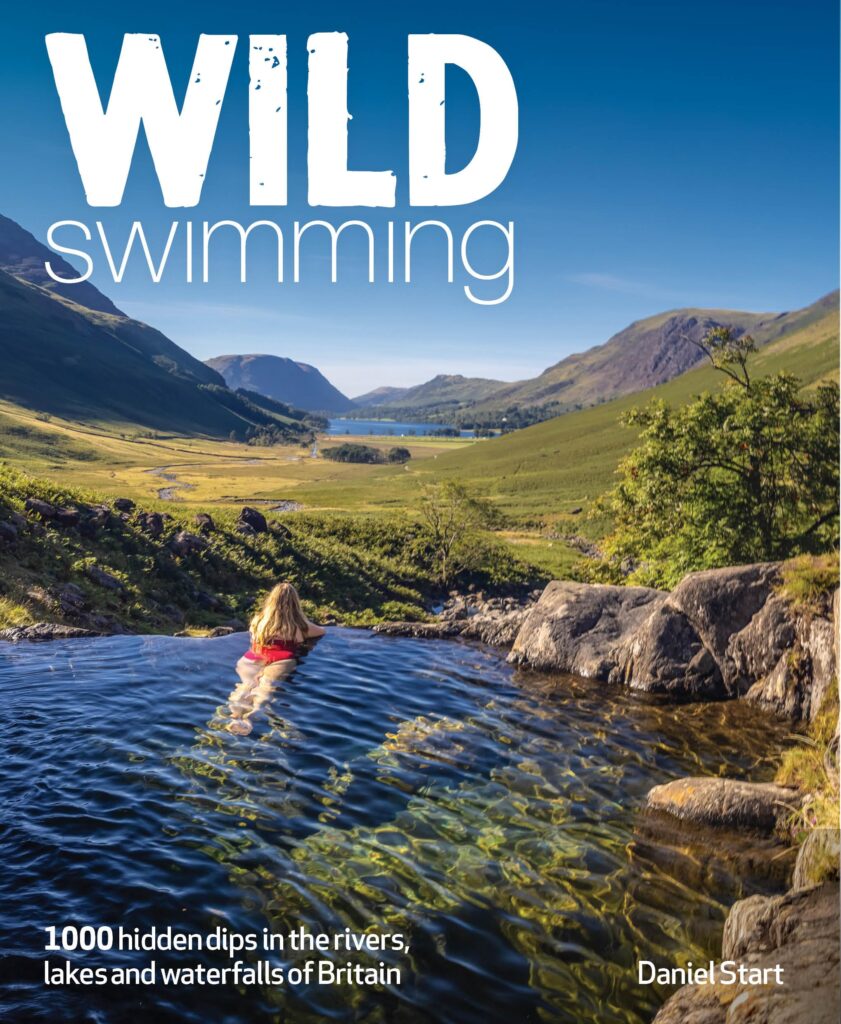
The book serves as a practical companion for both casual swimmers and dedicated wild swimming enthusiasts. With detailed descriptions of each location, you’ll know what to expect before you arrive. The guide also includes useful information about accessibility, water quality and the surrounding environment.
What makes this resource particularly valuable is its focus on hidden locations that many people might otherwise miss. The authors have done thorough research to uncover swimming spots that range from peaceful river pools to dramatic waterfalls.
Bottom Line
If you’re keen to explore Britain’s natural swimming spots, this guide is an essential resource for your adventures.
The comprehensive information and focus on hidden locations make it invaluable for planning your wild swimming journeys.
Ready to discover Britain’s secret swimming spots? Click here to purchase Wild Swimming Britain and start planning your aquatic adventures today!
Overview of Wild Swimming Britain (3rd Edition)
This comprehensive guide showcases 1,000 hidden swimming spots across Britain’s natural waterways. The third edition of Wild Swimming Britain offers a thorough exploration of secluded dips in rivers, lakes and waterfalls throughout England and Wales.
We find this guide particularly useful for adventure seekers looking to discover lesser-known swimming locations. The book is well-organised with clear directions to each spot, making it easy to plan outdoor swimming excursions.
The guide includes helpful information about water safety and access points, which is essential for responsible wild swimming. Photos throughout the book give readers a good sense of what to expect at each location.
While quite thorough in its coverage, some readers might wish for more details about water temperature variations throughout the seasons. Nevertheless, this remains an authoritative resource for anyone interested in exploring Britain’s natural swimming holes.
Comprehensive Guide to Wild Swimming Locations
This guide opens up a world of secret swimming spots across Britain. We found the detailed maps and directions incredibly helpful for finding hidden dips in rivers, lakes and waterfalls. The book covers 1000 locations throughout England and Wales, making it comprehensive enough for both beginners and experienced wild swimmers.
The photographs are stunning and give you a good sense of what to expect at each location. We appreciate how the guide provides practical information about water quality, safety considerations and best times to visit. Some spots are more accessible than others, which is clearly indicated.
While the guide is thorough, some locations in more remote areas could benefit from more detailed access instructions. The waterproof pages would have been a useful addition for a book likely to be used near water.
Overall, this third edition offers valuable updates to help you discover Britain’s most beautiful wild swimming locations safely.
Detailed Maps for Every Region
Finding the perfect swimming spot can be challenging, but this guide makes it much simpler. The Wild Swimming Britain guide includes comprehensive maps covering all regions of Britain.
We found the maps to be exceptionally detailed and easy to follow. Each region is clearly laid out with precise locations of all 1000 swimming spots marked. The maps show important features like access points, parking areas, and nearby facilities.
What stands out is how the maps highlight the terrain surrounding each location, helping swimmers understand what to expect before arriving. The colour-coded system makes it easy to identify different types of swimming spots—whether you’re looking for tranquil lakes, flowing rivers, or dramatic waterfalls.
The updated 3rd edition includes newly discovered locations and improved map clarity. At 364 pages, there’s ample space dedicated to ensuring you can navigate to even the most hidden dips across England and Wales.
Expert Swimming Safety Tips
Swimming in wild waters offers a unique thrill, but safety must always come first. We recommend checking water quality before entering any natural swimming spot. The Environment Agency provides updates on water conditions that can help you avoid potentially harmful areas.
Always swim with a companion when exploring wild swimming locations. Even experienced swimmers can face unexpected challenges in natural waters.
Weather conditions significantly impact safety. We advise against swimming during or after heavy rainfall when currents can become dangerously strong. Water temperature is another crucial factor – cold water shock can affect even strong swimmers.
Be mindful of your entry and exit points before getting in. Shallow diving is extremely dangerous in wild swimming spots where underwater hazards may not be visible.
If you’re new to wild swimming, start with calmer, well-known locations before attempting more remote spots featured in the Wild Swimming Britain guide.
Beautiful Full-Colour Photography
The visual element of this wild swimming guide truly stands out. We were impressed by the stunning photography that brings each swimming location to life. Throughout the pages, vibrant images showcase the crystal-clear waters, lush surrounding landscapes, and hidden gems waiting to be discovered.
Each photograph captures the unique character of Britain’s natural swimming spots. The colour quality is exceptional, making it easy to distinguish between the deep blue pools and shallow turquoise edges. This helps swimmers understand what to expect before visiting.
The images aren’t just beautiful—they’re functional too. They provide visual reference points that help with navigation and identification of specific entry points. Many photos include people swimming, which gives a good sense of scale and accessibility.
The photography alone might inspire your next adventure, even before reading the descriptions of the 1000 swimming locations across Britain.
Seasonal and Regional Highlights
Different parts of Britain offer unique wild swimming experiences throughout the year. In summer, the southern coastlines and gentle rivers of Devon and Cornwall provide warmer waters, typically reaching 18-20°C by August. We’ve found that Scotland’s lochs, while stunningly beautiful, remain chilly even in peak summer months, rarely exceeding 15°C.
The Wild Swimming Britain guide thoughtfully organises dips by region, making it easy to plan swimming adventures based on seasonal conditions. Spring enthusiasts will appreciate the recommendations for sheltered spots in the Lake District, while autumn swimmers are directed toward locations where water temperatures hold warmth longer, such as quarries in Wales.
The book also notes regional rainfall patterns that affect water clarity and flow rates. This practical information helps swimmers avoid potentially dangerous conditions after heavy rains, particularly in northern regions where water levels can change rapidly.
Pros and Cons
When exploring options for finding the best swimming spots across Britain, it’s important to weigh up what works well and what might fall short. The Wild Swimming Britain guide offers a comprehensive look at hidden swimming locations, but like any resource, it has its strengths and limitations.
Pros
- Extensive coverage of 1000 swimming locations across Britain
- Detailed information about rivers, lakes and waterfalls
- Updated 3rd edition with current and reliable information
- Travel guide format makes it easy to plan adventures
- Covers England & Wales thoroughly
- Practical resource for both beginners and experienced wild swimmers
Cons
- Lack of digital integration – no companion app or digital maps
- Limited Scotland coverage compared to England and Wales sections
- Size and weight might be cumbersome to carry while hiking to spots
- Some popular locations might be busier than indicated in the guide
- Weather and seasonal variations aren’t fully accounted for at each location
We believe this guide serves as an excellent resource for anyone interested in discovering Britain’s natural swimming spots, though it works best when supplemented with local knowledge and up-to-date information about conditions at specific locations.
Customer Reviews
This latest edition of Wild Swimming Britain has only recently hit the shelves, so there aren’t many customer reviews available yet. We expect feedback to start appearing soon as outdoor enthusiasts begin using this resource for their summer adventures. Based on previous editions, swimmers have typically appreciated the comprehensive coverage of hidden swimming spots throughout Britain.
The guidebook tends to earn praise for its detailed directions and helpful tips about water conditions. Most readers find the photography inspiring and the location descriptions practical. As reviews come in for this 3rd edition, we’ll be watching to see if readers highlight the expanded coverage of 1000 swimming locations.
If you’ve been using earlier versions of this guide, we’d be interested to hear your thoughts on how this update compares. For newcomers to wild swimming, this guide appears to be a promising resource for discovering Britain’s natural waters.
Conclusion
This updated guide to wild swimming spots across Britain offers a wealth of information for outdoor enthusiasts. We found the coverage of 1000 hidden locations to be impressively thorough, making it a valuable resource for both beginners and experienced wild swimmers. The third edition maintains the quality expected from this trusted series while providing fresh content and updated details.
While the book excels at identifying lesser-known swimming locations, we believe its practical advice on safety precautions and environmental considerations is equally important. The detailed maps and directions help ensure swimmers can find these hidden gems with minimal frustration.
For anyone interested in exploring Britain’s natural waterways, this guide serves as an excellent companion. It strikes a good balance between inspiring adventure and providing the necessary practical information to make wild swimming accessible and enjoyable.
Frequently Asked Questions
Many enthusiasts have questions about wild swimming in Britain. This comprehensive guide addresses common queries about this increasingly popular outdoor activity. Here’s what you might want to know before diving into the wild waters of Britain.
What are the recognised health benefits of engaging in wild swimming activities?
Wild swimming offers numerous health advantages that extend beyond typical exercise benefits. Cold water immersion can boost your immune system and improve circulation. Regular wild swimmers often report reduced stress levels and improved mental wellbeing, with many describing a natural “high” after swimming.
We’ve found that wild swimming can:
- Increase metabolism and burn calories effectively
- Reduce inflammation in muscles and joints
- Improve sleep quality
- Enhance mood through the release of endorphins
- Build cold water tolerance over time
Research suggests that outdoor swimming in natural settings may help alleviate symptoms of depression and anxiety, providing a connection with nature that indoor pools simply cannot match.
Can you highlight the regulations surrounding wild swimming within the United Kingdom?
Wild swimming in the UK operates under different access rights depending on your location:
England and Wales: The right to swim exists on navigable rivers and coastal waters. However, many inland water bodies are privately owned, requiring permission from landowners. The Countryside and Rights of Way Act 2000 doesn’t automatically grant swimming rights.
Scotland: The Land Reform (Scotland) Act 2003 provides more generous access rights. Wild swimming is generally permitted in most inland water bodies provided you behave responsibly.
Northern Ireland: Access rights are more restricted, with permission often required from landowners.
It’s worth noting that certain areas may have local bylaws prohibiting swimming, particularly reservoirs where swimming is almost always forbidden due to safety concerns. Always check local regulations before swimming.
What measures should be taken to ensure personal safety while river swimming in the UK?
Safety should always be your priority when wild swimming. We recommend taking these precautions:
- Never swim alone – always bring at least one companion
- Check water conditions – be aware of currents, water depth and temperature
- Enter gradually – allow your body to acclimatise to cold water
- Know your limits – don’t swim out of your depth or ability
- Wear visible equipment – bright swim caps or tow floats increase visibility
For river swimming specifically, be aware of changing currents and potential underwater hazards like branches or rocks. Check water quality reports and avoid swimming after heavy rainfall when pollution levels may be higher.
A bright tow float is particularly useful as it provides visibility to others and can offer flotation support if needed.
Could you provide guidance on identifying safe wild swimming spots throughout Scotland?
Scotland offers some of Britain’s most spectacular wild swimming locations. When identifying safe spots, consider:
Lochs: Generally provide calmer conditions than rivers but can have steep drop-offs. The eastern shores typically warm faster in summer.
Rivers: Look for natural pools and slower-moving sections. Avoid areas immediately after heavy rain when rivers can become dangerous.
Coastal areas: Research tides and currents before swimming. Sea lochs often provide more sheltered conditions than open coastlines.
Safe spots typically include:
- Clear water visibility
- Gentle entry and exit points
- Absence of strong currents
- Limited boat traffic
- Known local swimming spots
The Cairngorms National Park and the Isle of Skye offer numerous safe swimming locations. Local knowledge is invaluable, so check with visitor centres or speak with locals before swimming in unfamiliar areas.
What precautions are recommended for wild swimmers to mitigate environmental impacts?
Wild swimmers should practise responsible environmental stewardship. We suggest these guidelines:
- Leave no trace – take all belongings and litter home
- Avoid disturbing wildlife – keep noise levels down and maintain distance from nesting birds
- Use biodegradable sunscreen or protective clothing instead of chemical sunscreens
- Respect plant life – avoid trampling sensitive shoreline vegetation
- Clean equipment between swims to prevent spreading invasive species
Additionally, consider joining local conservation efforts or wild swimming groups that actively participate in waterway clean-ups. By protecting these environments, we ensure they remain pristine for future generations of swimmers.
How does the 3rd edition of ‘Wild Swimming Britain’ enhance a swimmer’s experience compared to previous editions?
The 3rd edition of Wild Swimming Britain significantly improves upon earlier versions with several notable enhancements:
- Updated locations: Features 1000 swimming spots, including newly discovered gems
- Enhanced mapping: More detailed OS grid references and improved directions
- Current safety information: Updated hazard warnings and seasonal considerations
- Environmental guidance: New sections on protecting the natural habitats
- Mobile compatibility: QR codes linking to online resources and real-time updates
The latest edition also includes expanded sections on wild swimming in previously underrepresented regions, providing more comprehensive coverage across Britain. The photography has been refreshed with stunning new images that better capture the beauty of these natural swimming spots.
Unlike previous editions, this version incorporates feedback from the growing wild swimming community, resulting in more practical, swimmer-focused content.

